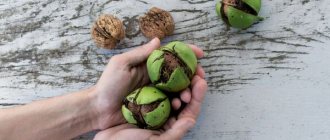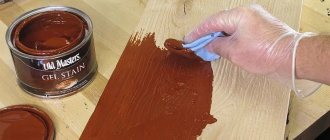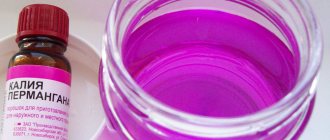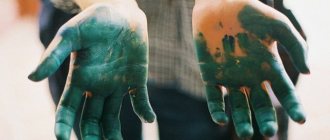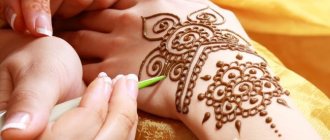After repairs and other work with various materials and substances, it can be very difficult to get your nails and skin in order. Often, traces of stubborn dirt cannot be completely removed with ordinary soap and a brush. Some try to get rid of them using more aggressive methods that can damage the skin. There are also special means for getting rid of various types of dirt., these liquids can be purchased at the store or prepared independently at home.
Cleansing skin and nails from fuel oil
To remove traces of fuel oil from your hands, it is recommended to use the following methods:
- Getting rid of stains using chemicals (washing powder, special store-bought compositions for cleaning stubborn stains from leather, car shampoo or solvents, the safest of which is motor oil).
- Removing dark matter using folk remedies that do not have such an aggressive effect on the skin.
The first method of preparing a composition that can remove traces of fuel oil from clothes : you need to take a container, pour a handful of starch and soda into it, pour in ammonia and turpentine (0.5 tbsp each). Mix the ingredients to a paste , apply to the skin of your hands or clothes and wait until the substance dries. Wash off with warm water and soap. You just have to pay attention that this product can ruin dyed fabrics. Therefore, before using it, it is better to test it on a small piece from the reverse side. The second fairly effective substance for cleansing the skin of fuel oil is coffee grounds. You just need to rub your hands and other dirty areas well with it, and then wash it off along with the dirt.
Elderberries also have cleansing properties ; with their help you can easily get rid of fuel oil on the skin. To do this, you need to crush them and rub them thoroughly with your hands - the dirt will come off. Unripe red currants or gooseberries have approximately the same effect. Sorrel can be used for the same purposes.
Peroxide
In order to make a cleansing bath with hydrogen peroxide, you need to combine the following ingredients:
The water is heated to approximately +40 degrees. All ingredients are stirred until a homogeneous liquid is obtained.
Hands should be kept in this mixture for no more than 10 minutes. After the procedure, wash your skin with warm water using a soft brush. Rinse and dry your hands as usual.
Removing traces of acrylic paint
Acrylic paint is water-soluble with a film-forming agent in its composition, and if you thoroughly wash your hands with soap immediately after finishing the repair work, not a trace will remain of it .
But the situation is different with stains that have dried out and are quite deeply ingrained into the skin and nails. During this time, the film former hardens, and it becomes a little more difficult to wash off the paint .
In order to wipe acrylic paint from the skin after 30-60 minutes and up to a day, you need to use any product that can break down fat. This could be dishwashing liquid, vinegar, or solvent. To soften a hardened stain, you need to rub it more than once. If the traces of acrylic paint are more than a day , then it is more difficult to deal with them; you will need other means, such as white spirit, kerosene or gasoline . Acetone or nail polish remover without acetone can also help. To soften the film, you need to act on the stain for at least half an hour. The downside is that these liquids are quite aggressive on the skin, so after using them you need to use a nourishing hand cream or restorative baths.
Useful household chemicals
To wash your hands and nails, you need to deal not only with dried dirt, but also with those microparticles that remain under the tissues or in microcracks in the skin. The smoother the surfaces, the less time you will have to spend on processing. However, the earth itself is capable of corroding tissues, making them dry and loose. Therefore, thorough cleaning is mandatory even after short periods of use.
For protection, it is not enough to use fabric gloves; latex ones are needed. They are denser than thin rubber ones, less slippery and less likely to cause irritation.
Any products containing alkali or acids are especially effective. Unlike ordinary soap, they quickly break down particles of earth and even grass, entering into a small chemical reaction with them. You can use:
Hydrogen peroxide at a concentration of 3% is diluted by half with lukewarm water. Place your hands in the filled container for 2-3 minutes, then rinse under running water. Particularly difficult areas can be treated with a cotton swab dipped in a concentrated solution. This is a good option for those who do heavy gardening and may injure their hands.
Citric acid will help in the most difficult cases, for example, if the dirt is deeply ingrained and the skin is dry and cracked. This remedy should not be used if there are open wounds or allergies to citrus fruits. Pour a teaspoon of acid with two tablespoons of olive oil. Rub your hands with the mixture, leave for 1 minute and rinse several times under running warm water. A more gentle method is washing with soda. Mix it in the same proportions and use it as a soft scrub. To clean your nails, make a saturated solution: 2 tablespoons per 400 milliliters of warm water. Let your hands sit for 5-7 minutes, then rinse with water and brush with a soft brush. After any such procedure, you need to use an effective moisturizer or nourishing cream. If the skin is inflamed or irritated, these cleansing methods should not be used.
Removing oil paint marks
If your hands are slightly dirty, butter or vegetable oil can help solve this problem.
You need to take a small amount onto a cloth and rub the stains with it until they dissolve. This may take some time, but it will not harm the skin. Among chemical products, nail polish remover can help. The same white spirit or acetone. These liquids are usually used if the area of contamination is large. But they can dry out the skin a lot, so after cleansing you need to use a cream.
| If dye gets on your hair, it is better to remove it with oils. |
Aspirin
People who care about their appearance often use an aspirin mask to cleanse their facial skin. But it is suitable for other purposes.
After working in the garden, it is quite difficult to remove dirt under the nails and in the deep pores of the skin. A simple method will help.
One aspirin tablet should be diluted in a tablespoon of water, after crushing it to a powder. Add half a teaspoon of honey to the mixture. It will nourish tired skin and make it smoother.
Means for removing traces of machine oil
Any person, even those who do not deal with car repairs, can encounter a stain from machine oil, because you can get dirty with this liquid even on escalators or in public transport. It is not so easy to wash off these stains, but it is quite possible.
If the stains are fresh and small in size, regular laundry soap with 72% fat content will help. You need to thoroughly wash your hands with it, using a brush if necessary. There is also a rather unusual way to remove machine oil stains from your hands - you just need to buy a carbonated drink like Coca-Cola. You need to wash your hands with it, then with water and then use the cream. You can also get rid of fresh marks using butter or vegetable oil by rubbing your hands with a cotton pad or napkin soaked in it. Baking soda diluted with water to form a thick sour cream can remove strong traces The mixture is applied to contaminated areas and rubbed into the skin, then washed off with warm water. You can also use dishwashing detergent for cleaning. This liquid will get rid of traces of machine oil in 3 minutes , but they may remain under the nail plates and will have to be bleached. If the skin reacts with irritation to the procedures, you need to use a cream with a thick consistency. white spirit will help get rid of it . Apply a small amount of this liquid to a cloth and rub the problem area with it, then wash your hands well with soap and apply a rich cream. There are also pastes specially created for washing motor oil. They do their job well and cleanse not only the skin, but also the nail area from stains, without having a negative effect on them. Moreover, to remove marks you don’t need water at all, just a few napkins.
Red elderberry
Towards the end of the season, ripe clusters can be found on the branches of red elderberry in the garden. Their juice is good at washing away traces left after sorting colored berries, as well as other garden work.
Rub the fruit into your palms and then wash your hands with cool water. This natural soap is capable of dissolving plant resins: they appear on the skin after interaction with coniferous crops or cherry growths.
How to remove traces of cement from hands and nails
Cement is a rather harmful substance for the skin. Those who have ever gotten dirty with it know that it causes dryness, itching and burning.
Sometimes cement masses can even corrode the skin. Therefore, removing this unsafe composition from your hands is a priority task after repair work. Fresh cement marks can be washed off with soap or another detergent. But after a while the mixture dries out and you have to look for another way out. Special store-bought detergents containing an abrasive substance can come to the rescue. After removing the cement, it is very important to take care of the skin, lubricate it with a nourishing cream or even healing ointments, such as “Rescuer” (if there are obvious damage to the skin).
Tomato
A good natural way to remove stubborn dark stains is to cut a tomato in half and rub it thoroughly on your hands. The juicy pulp should be absorbed into the skin. After a while, rinse your hands with warm water.
If necessary, the procedure must be repeated.
Tomato juice tightens enlarged pores. To enhance the cleansing effect, you can squeeze it into a bowl and add bran or ground oatmeal.
Removing sealant and plaster stains from hands
If you were not wearing gloves during repairs and there are traces of plaster or sealant left, the following methods will help you get rid of them:
- apply medical alcohol to a cloth or cotton pad and wipe problem areas;
- instead of alcohol, you can use gasoline or nail polish remover containing acetone;
- try to clean the skin with a cloth soaked in a 3% vinegar solution .
- Moreover, fresh plaster stains from the skin of your hands can be removed using water and regular soap.
We wash our feet after dacha with citric acid
If you don't trust a soap bath, you can use citric acid peeling. Place a handful of citric acid in your palm and add some olive oil. Mix the ingredients and apply the resulting mixture to each foot.
If you don't have olive oil on hand, you can use water instead - this will also be effective.
After you finish cleaning, rinse your feet and apply cream to your feet.
If you don’t have detergents on hand, try cleaning your hands after gardening with tomato, sorrel, potatoes or grated apple.
Cleansing skin from hardened glue and superglue
The biggest problem for people is removing glue like “Moment” or “Second” . These are quick-setting compounds that leave a hard film after drying. How to remove it? This can be done in several ways:
- Purchase a special product at the store to corrode such compounds. They cost around 70 rubles and cope quite effectively even with old stains from superglue ( "Contact", "Strength" and others). If it is necessary to remove marks on any surface, the gel is spread over it and left for about an hour. The product stays on the skin for no less time. As soon as the superglue layer begins to become softer, you need to take soap and a brush and remove it under water.
- Some use abrasive materials to scrape off hardened glue (pumice and others ). But if the layer is very thin and the mechanical forces are intense, then the skin can be injured.
- If it is not possible to get to the store and purchase a special remover, you can use chemical liquids available at home. It can be white spirit, acetone. These products will not remove superglue as effectively, but in a few steps they can do the job. After using them, you need to wash your hands with soap and protect your skin with a rich cream.
- If the skin is very sensitive and reacts strongly to chemical solvents, you can take a small amount of ordinary salt and rub it between your palms for a while. It is better to perform this procedure after first soaking your hands in hot water. After white foam forms, rinse it off and apply nourishing cream to the skin. A body scrub with a large number of large particles can also cope with the function of salt.
- The pharmacy sells Dimexide , which can also soften frozen superglue. To do this, you need to apply it to the fabric and apply it to the stain. After a few minutes, when it softens, remove with warm water and a sponge.
If the glue is not completely wiped off, do not be upset. After a few days, it will detach itself along with the dying pieces of skin.
We wash our feet after the dacha using soap baths
There are many ways to wash your feet after excavation work carried out on a summer cottage. Here are some easy options.
Soap bath
We will need a bath or basin with water heated to 40°C. Pour some liquid soap into it and shake. Immerse your feet in the resulting bath for 20 minutes. After this, treat your heels and other contaminated areas with a brush or pumice stone. After the procedure is completed, lubricate your feet with cream.
Soap and soda bath
This combination cleanses dirty feet after gardening with double strength. For 3 liters of water you will need 20 ml of soap and 10 g of soda. Combine ingredients in water. Soak your feet in the resulting bath for 15 minutes. After this, treat the contaminated areas with a brush.
Soap and sea salt bath
Pour 2 liters of water into a basin, add 20 ml of soap and 5 g of sea salt. Keep your feet in this bath for 20 minutes. Next, rub the contaminated areas with a sponge and apply cream to your feet.
Bath of soap and essential oils
Pour 2 liters of warm water into a container, add 10 ml of liquid soap and 5 ml of any essential oil. Keep your feet in this bath for 15 minutes and then scrub them with a brush. After the procedure, apply nourishing cream to the skin of your feet.
Soap and chamomile bath
Brew 2 bags of chamomile in 2 liters of hot water. Add 15 ml of soap to the resulting decoction. You should keep your feet in this bath for no more than 25 minutes, then rub the areas with stubborn dirt with a sponge. Lubricate clean feet with cream.
Graphite Grease Removers
Graphite grease is not easy to remove from skin. dishwashing detergent for this purpose to dissolve the dirt. But you shouldn’t expect clean nails, and the skin will be dry after the procedure, which will require additional moisturizing. Gasoline will help wash off graphite grease almost instantly. Although it is better to save this product for various surfaces or clothing, and not for the skin, since this substance has a very negative effect on human tissues and organs. It is better to always have with you a special remover for complex skin stains, which contains much less substances that destroy the lipid layer of the skin than the same washing powder or dishwashing detergent.
White hands don't work on the ground
Many dacha owners would be happy to work on the ground wearing gloves, but they know how inconvenient it is to tear off stepsons and pull out small grass from the garden bed.
Therefore, more often you have to work with your bare hands, and then wash them in different ways. At home, there are many different products that will wash away any dirt until white.
